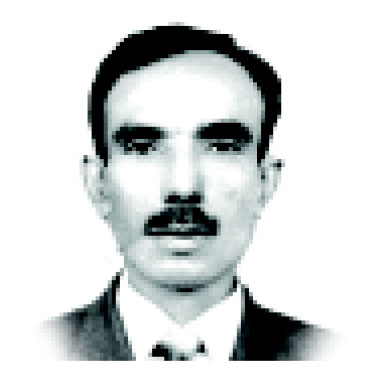SAJJAD SHAUKAT
WHILE, the ideology of Hindutva (Hindu nationalism) is the genesis of Hindu ter rorism, having co-relationship with it, India’s political fault lines are based upon the discriminatory system of caste and religion. These trends in Indian politics have become the staging ground for all the national movements and wars of liberation. Indian anti-Muslim and anti-Pakistan approach is also part of India’s fault lines politics. Since NarendarModi,theleader ofthe ruling party BJP became the Indian PrimeMinister in 2014, he started implementing ideology of Hindutva. Under his regime, persecution of religious minorities such as Dalits, Sikhs, Christians and particularly Muslims, including even of lower cast-Hindus might be cited as instance. In this regard, the Indian Citizenship Amendment Act 2019 (CAA), passed by the Indian Parliament further exposedthe discriminatory policies oftheModi government.TheCAAcoupled with the National Register of Citizens (NRC) is mainly against the Muslim immigrants especially from Pakistan, Bangladesh andAfghanistan. Since December 15, 2019, daily mass protests, even by the moderate Hindus have been taking place across every state in India against the CAA and the NRC, which resulted into killing of more than 100 persons and injuring 800-mostly Muslims by the police and fanatic Hindus, Modi-led regime has not withdrawn the CAA/NRC. More than seven months have been passed. But, Indian extremist government led by the extremist Prime Minister Modi continued lockdown in the Indian Occupied Kashmir (IOK). While, Indian fanatic rulers are also escalating tensions with Pakistan to divert attention from the drastic situation of the (IOK), and have continued shellinginside Pakistani side of Kashmir by violatingthe ceasefire agreementin relationtothe Line of Control (LoC). OnAugust 5, 2019 Indian Premier Modi’s government ended special status of the Jummu and Kashmir by abolishing articles 35A and 370 of the Constitution to turn Muslim majority into minority in the Indian Held Kashmir. Implementing the August 5 announcement, Indian central government issued a notorious map on October 31, 2019. In accordance withit, Jammu and Kashmir was bifurcatedintotwo union territories—Jammu and Kashmir and Ladakh. Besides Pakistan, China also rejected the Indian map. In this regard, China objected to the bifurcation of Jammu and Kashmir into two union territories as “unlawful and void”, saying that India’s decision to “include” some of China’s territory into its administrative jurisdiction “challenged” Beijing’s sovereignty. Border dispute between New Delhi and China, which remains unsettled, has increased tension between the two countries. Notably, former Soviet Union which had subjugated the minorities and ethnic groups in various provinces and regions through its military, disintegrated in 1991. New Delhi has been acting upon the similar policies in some way or the other. However, India, dominated by politicians from the Hindi heartland—Hindutva have been using brutal force ruthlessly against any move to freeAssam, Kashmir, Khalistan, Mizoram, Nagaland, Tamil Nadu and Tripura where wars of liberation continue in one form or the other. Due to the discrimination against the Sikh community, Sikhs have been fighting for Kahalistan as an independent state. In the recent years, Maoist intensified their struggle by attacking official installments. In this context, Indian media admitted that Maoists have entered the cities, expanding their activities against the Indian union. On 22-23 April 2018, atleast 39Maoists were killedin an alleged encounter with Indian security forcesin district Gadchiroli. Maoist uprising is second major freedom movement after that of the Occupied Kashmir. Tamil Nadu is another area where separatist movements are haunting federation of India. And, the seven states of Northeastern India, which are called the ‘Seven Sisters’are ethnically and linguistically different from rest of the country. These states are rocked by a large number of armed and violent rebellions, some seeking separate states, some fighting for autonomy and others demanding complete independence. These states which include Assam, Arunachal Pradesh, Meghalaya, Manipur, Mizoram, Nagaland and Tripura, accuse New Delhi of apathy towards their issues. Illiteracy, poverty and lack of economic opportunities have fueled the natives’ demand for autonomy and independence. As regards the state of Assam, the BJP-led alliance has been targeting the 4 million Assamese Muslims who are being denied Indian citizenship under the NRC. Undoubtedly, these states have witnessed various sorts of India’s state terrorism, but, did not stop their struggle. Instead of redressing the grievances of the people by eliminating injustices against them, Modi-led Indian regime is depending upon ruthless force to crush these extremist and secessionist movements. Therefore, India’s unrealistic counterinsurgency strategy has badly failed. It is of particular attention that Indian Minister of External affairs Jaswant Singh who served the BJP for 30 years was expelled from the party for praising Mohammad Ali Jinnah [Founder of Pakistan] and echoing the pain of the Indian Muslims in his book, “Jinnah: India, Partition, Independence.” Pointing out the BJP’s attitude towards the minorities, Singh wrote: “Every Muslim that lives in India is a loyal Indian…look into the eyes of Indian Muslims and see the pain.” He warned in his book, if such a policy continued, “India could have third partition.” We can conclude that Modi’s “New India”, which is “Meta Nationalism”, is transforming the country into a “fascist and extremist India”, as Modi is intolerant and inflexible to any kind of opposition. So, Prime Minister Narendar Modi’s extremist policies based upon political fault lines are moving India towards disintegration like the former Soviet Union. —The writer is freelance columnist based in Lahore










